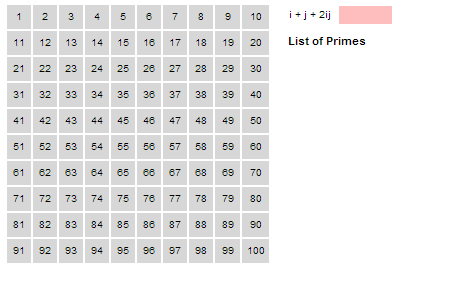 | ||
In mathematics, the sieve of Sundaram is a simple deterministic algorithm for finding all prime numbers up to a specified integer. It was discovered by Indian mathematician S. P. Sundaram in 1934.
Contents
Algorithm
Start with a list of the integers from 1 to n. From this list, remove all numbers of the form i + j + 2ij where:
The remaining numbers are doubled and incremented by one, giving a list of the odd prime numbers (i.e., all primes except 2) below 2n + 2.
The sieve of Sundaram sieves out the composite numbers just as sieve of Eratosthenes does, but even numbers are not considered; the work of "crossing out" the multiples of 2 is done by the final double-and-increment step. Whenever Eratosthenes' method would cross out k different multiples of a prime
Correctness
If we start with integers from 1 to n, the final list contains only odd integers from 3 to
Let q be an odd integer of the form
So, an odd integer is excluded from the final list if and only if it has a factorization of the form
